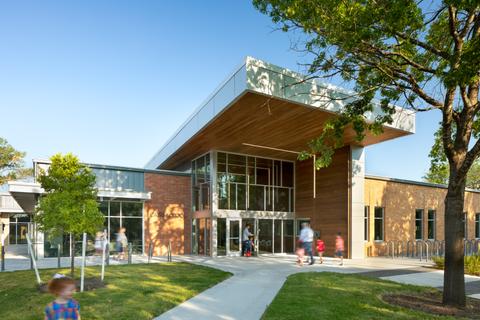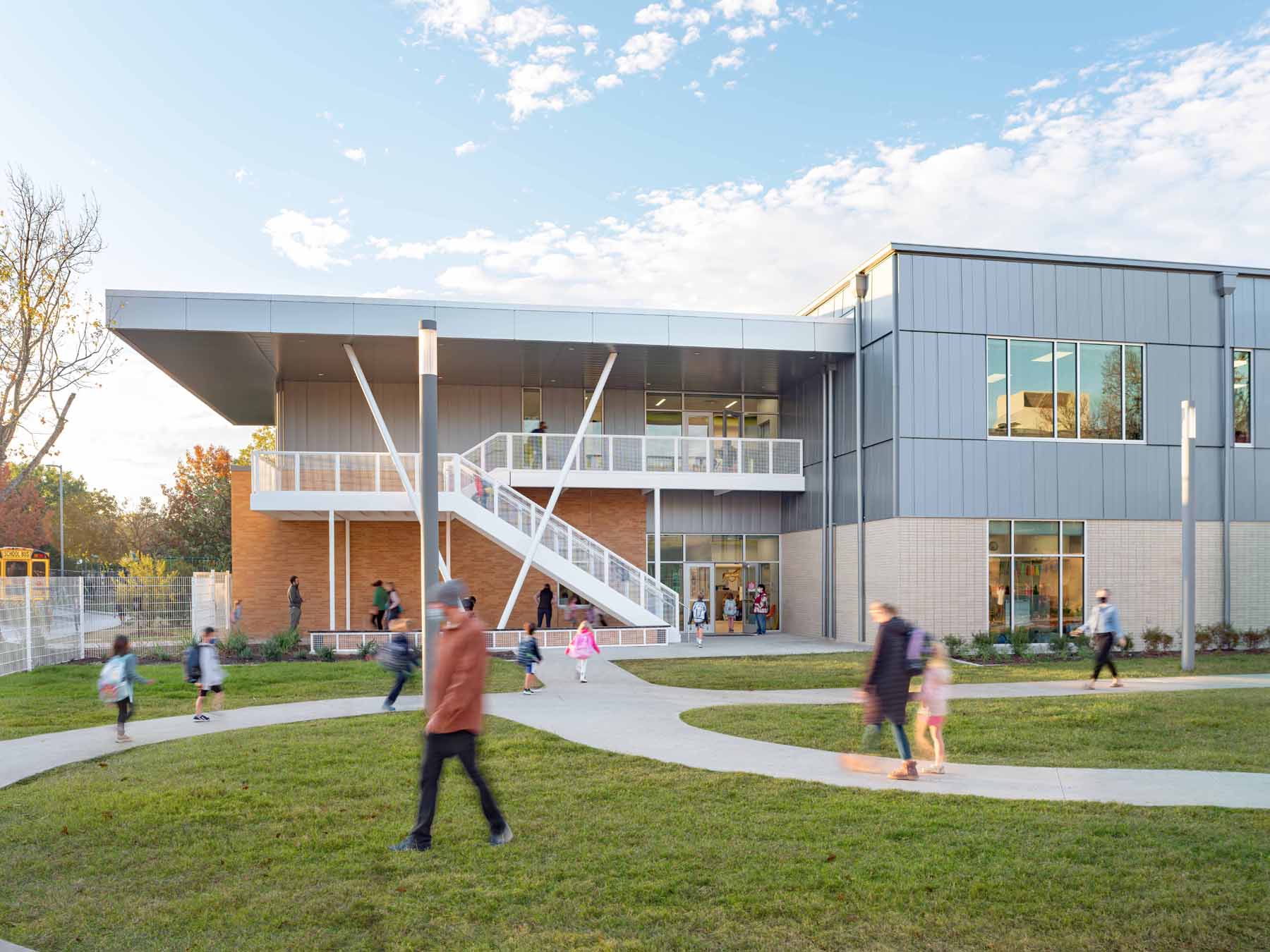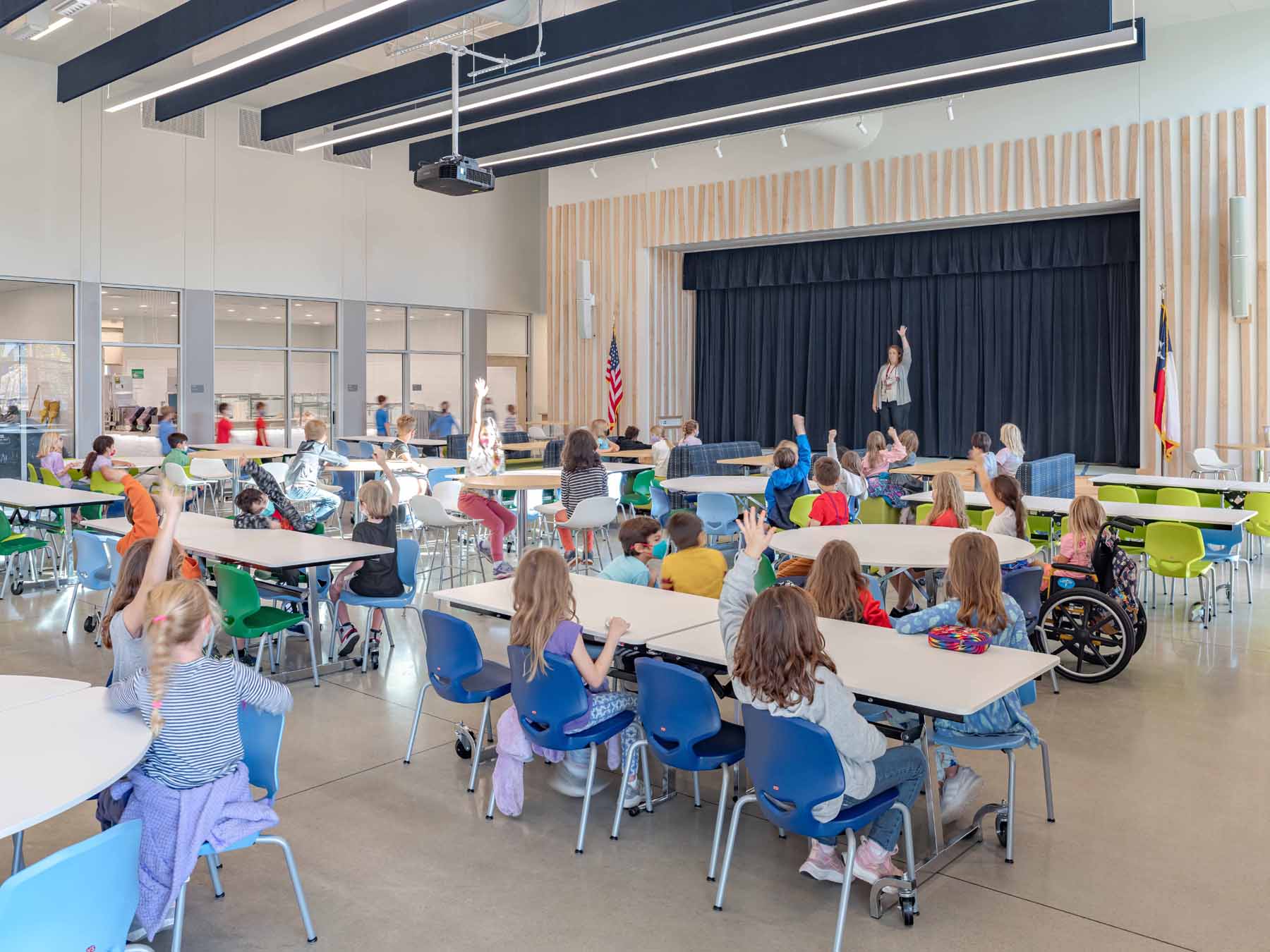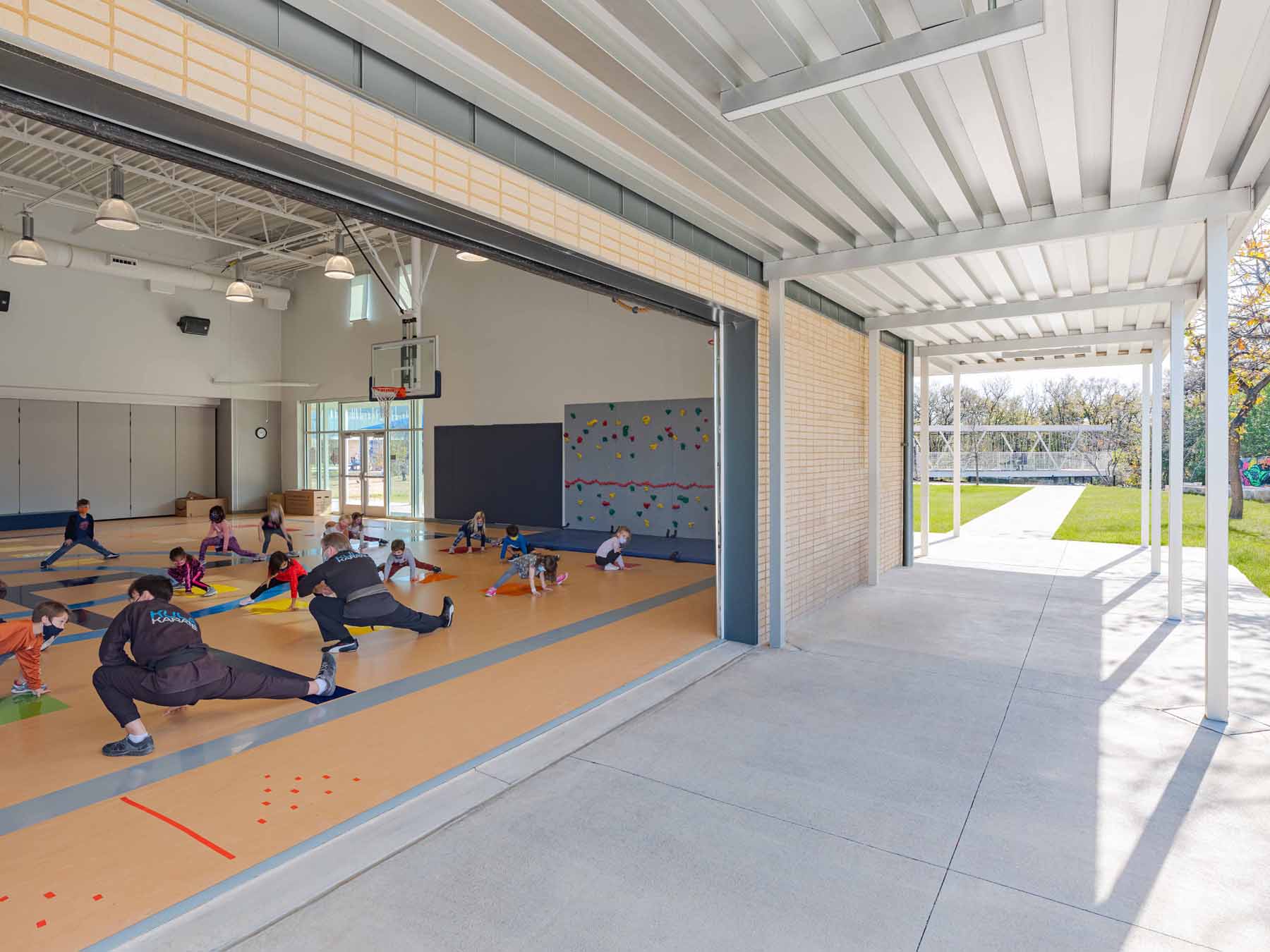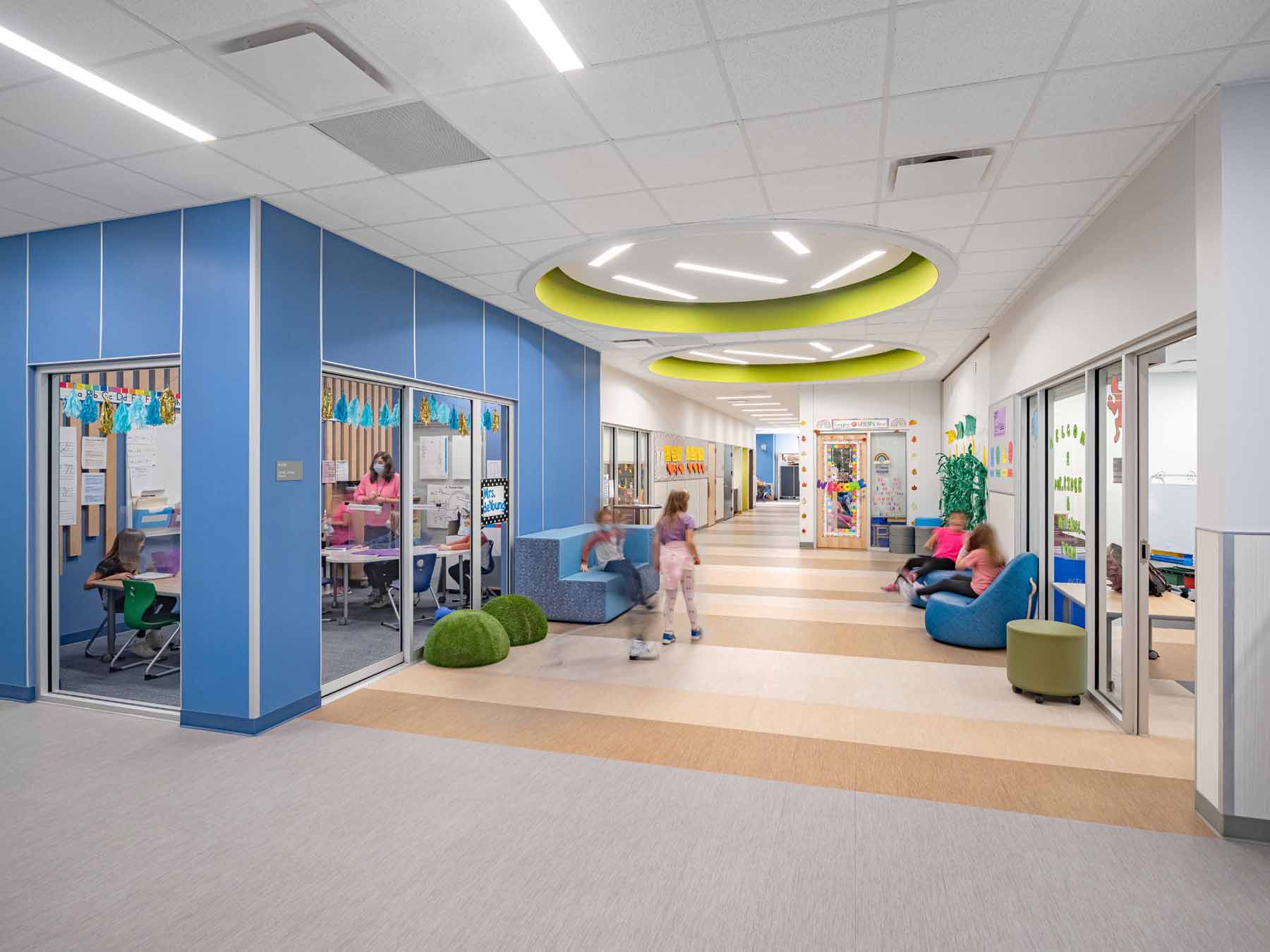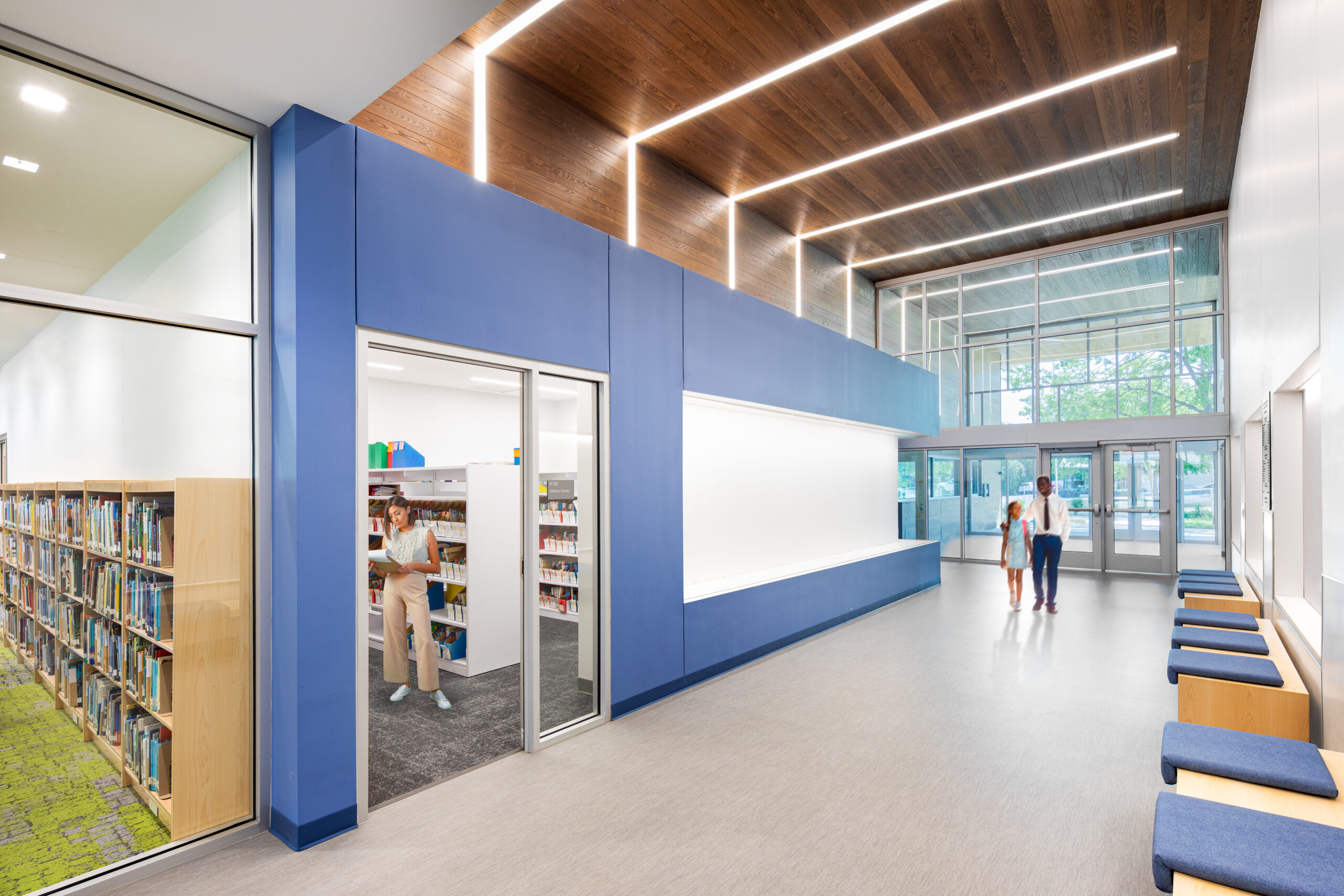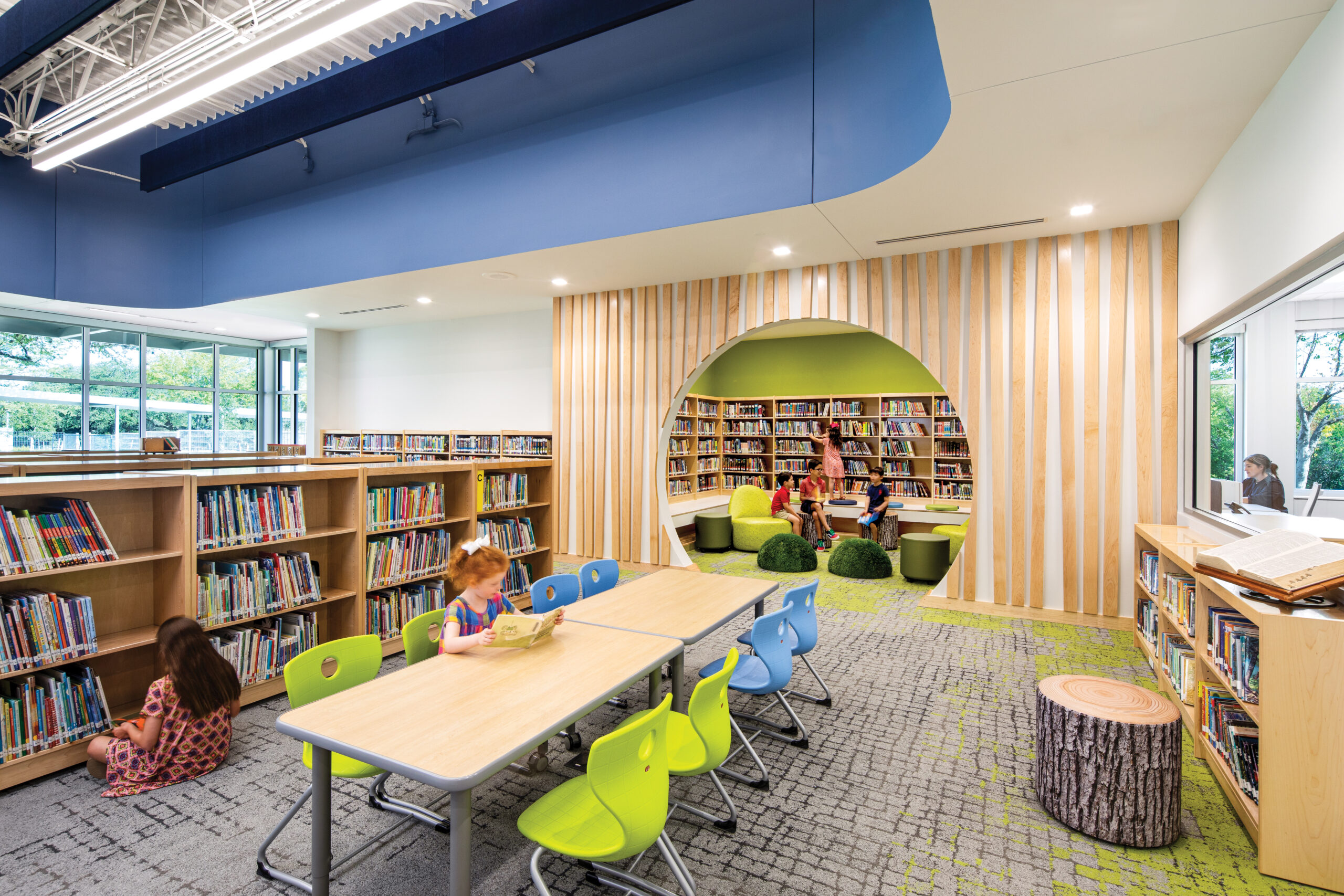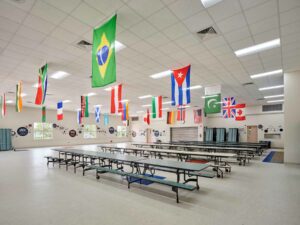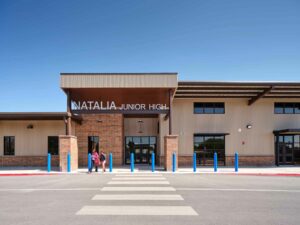Casis Elementary is an Austin ISD 2017 Bond Elementary School modernization project designed to increase enrollment to over 800 students. This 94,718 SF campus is designed to reflect the community, nature, and history by involving students, faculty, and locals in the design process, embracing the outdoor and preserving items from the original building. The school’s campus was originally built in 1951 as a joint enterprise with Austin Public Schools and the University of Texas. The design would unify and modernize, creating 21st-century learning spaces for the young Casis scholars to experience.
The new elementary school embraced the outdoor nature and the history of the school into the design. Modern, vibrant colors liven up the interior walls, the flooring reflects tree grain texture, and LED lights on the ceiling mimic tree limbs all around the campus. Large windows throughout the building allow for an abundance of natural light to flood the corridors.
Dedicated collaborative work areas such as outdoor classrooms, small group rooms, and maker spaces were designed to enhance the learning experience and support different types of teaching. The maker space is designed and equipped with tools that allow students to engage and explore STEM learning activities.
Three courtyards, a canopy, detention pond, basketball court with shade structure, and an open roof deck are all new community features. There is an extensive walking track and an immense amount of outdoor green space as there is a half-acre forest neighboring the campus known as the “Casis Forest.”
To pay homage to the original campus, items such as the original Casis Elementary School sign at the entrance were preserved. After establishing the basis of design to pay respects to the outdoors, it only made sense to be diligent in the preservation of existing trees on the campus. The team ensured their protection by installing several fifty gallon buckets of water with tree fertilizer to upkeep the surrounding trees during the construction process.
The modernization of an Austin ISD school with collaborative learning spaces and makerspaces transforms the traditional model of K-12 education. This new school will be the hub of exploratory learning and messy creation for the future cougars, allowing each student the opportunity to be inspired by the learning experience and become future leaders of their communities.
